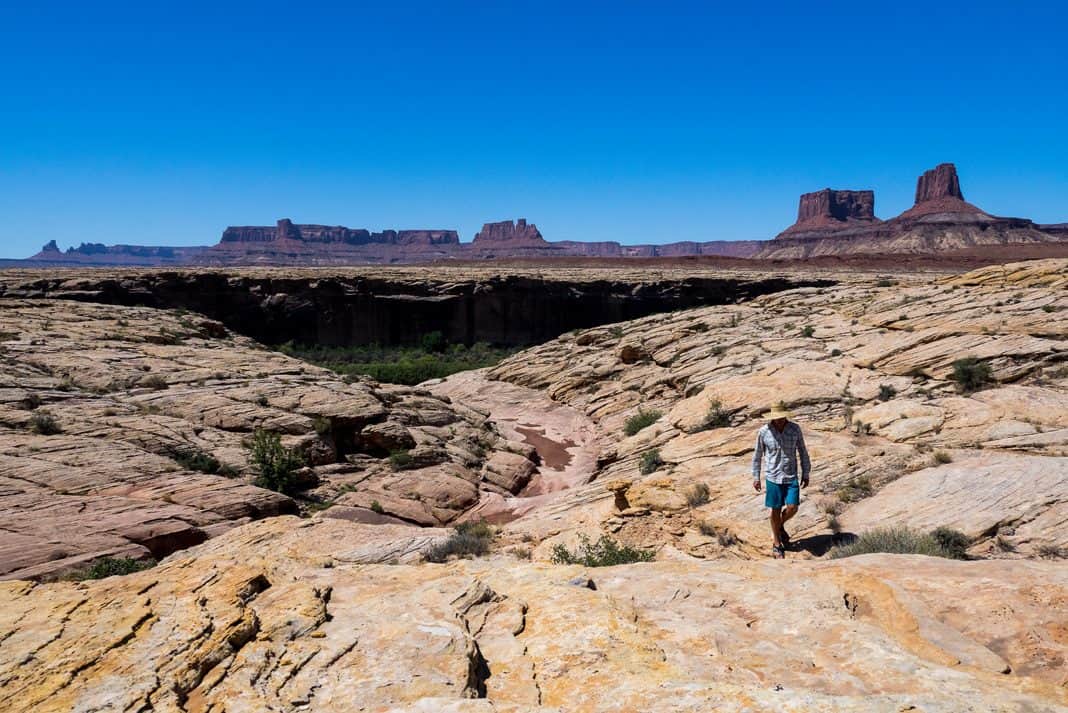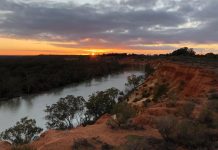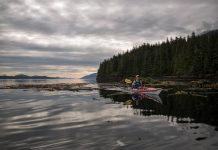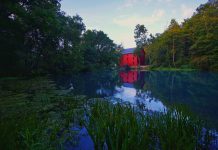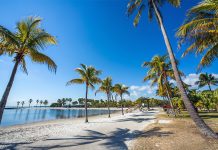In mid-July of 1869, John Wesley Powell and crew, in three wooden rowboats, spilled haphazardly out of Gray Canyon into a sandy basin near present-day Green River, Utah. They were down a man who had left the expedition after a boat was wrecked in the rapids of Lodore Canyon the month before.
Already they’d come about 400 miles—running, lining, and portaging hundreds of rapids. After 20 miles of easy floating, a new canyon appeared. Rising bluffs typically foretold trouble, but this canyon was different.
The river was calm as a lake, sweeping through great meanders between cliffs of orange sandstone. The circuitous route through colorfully changing rock formations became so tortuous, Powell named it Labyrinth Canyon. When spires and buttes rose overhead, this became Tower Park. And when the walls deepened into a more coherent gorge above the confluence, Powell reminded mapmakers about the slow current: Stillwater Canyon.
Today, these sections along 140 miles of the Green River offer some of the finest flatwater paddling in the desert Southwest. Given the remote region the river travels through, access points are few and distances between far. But if you’re in good paddling shape, comfortable with remote runs and interested in unreal scenery, this is for you. Mid-to late-spring and early-to mid-fall are preferred, while mid-summer is a real scorcher. Side hikes, ruins and rock art are just as good as the paddling.
Weather: Sunny with a slight chance of shade, if you have an umbrella. Be prepared for big temp swings, powerful winds and sudden thunderstorms. This is high desert.
Shuttle: Coyote Shuttle offers vehicle transfers and full-service shuttles for trips down Labyrinth and Stillwater. coyoteshuttle.com
Don’t Miss: Nearby Moab, Utah, is one of the top adventure towns in the U.S., with enough world-class mountain biking trails to make the most dedicated paddler consider (temporarily) switching sports.
Diversions: Winding above the river through Tower Park is the White Rim Road, a 100-mile unpaved loop through the Island in the Sky district of Canyonlands National Park. A National Parks Service permit is required.
Learn More: For a guide to 1,600 miles on the Green and Colorado Rivers, plus the dramatic story of the 1869 expedition, see Paddling the John Wesley Powell Route by Mike Bezemek.
If you have a half day
Upstream from Green River, Utah, the Daily is eight miles of easy, pool-drop class II-II+ through the stark but scenic Gray Canyon. It’s a somewhat popular stretch for beginner whitewater kayaking and warm-weather floats. Put-in is at the primitive Nefertiti Access. Take-out is at Swaseys Beach boat ramp. Self shuttle using the unpaved, riverside Beach Road.
If you have a full day
The shorter option is 12.5 miles, through irrigated farm fields, from Swaseys to Green River State Park. But the more ambitious and interesting option is 23 miles from the state park to Ruby Ranch, past the curious manmade Crystal Geyser, gypsum buttes, and the scenic beginnings of Labyrinth Canyon. The shuttle on I-70 and unpaved Ruby Ranch Road takes one hour each way.
If you have a weekend
Make it a long weekend, and paddle 45 miles from Ruby Ranch to Mineral Bottom through a landscape that will change your life—and possibly take years off your vehicle’s suspension. Highlights include Trin Alcove, Navajo Sandstone, Bowknot Bend, and much more. A self-issue permit is required for Labyrinth Canyon, available online from BLM.
If you have a week
Then, boy, you’re going to need it. Combine the Lab trip above with 52 miles through Tower Park and Stillwater Canyon in the otherworldly Canyonlands National Park—advance permit required, but no lottery or quotas. There’s no take-out, so arrange a jet boat extraction from Spanish Bottom just below the confluence of the Colorado River upstream to Moab. What else? Fort Bottom. White Rim. Upheaval Dome. Butte of the Cross. Dollhouse. Yeah, I’m just listing cool stuff—are you Googling yet? You should be sitting down when you do.
At 730 miles long, the Green River is the largest tributary of the Colorado River. Its headwaters are in the Wind River Range in Wyoming. Feature Photo: Mike Bezemek



